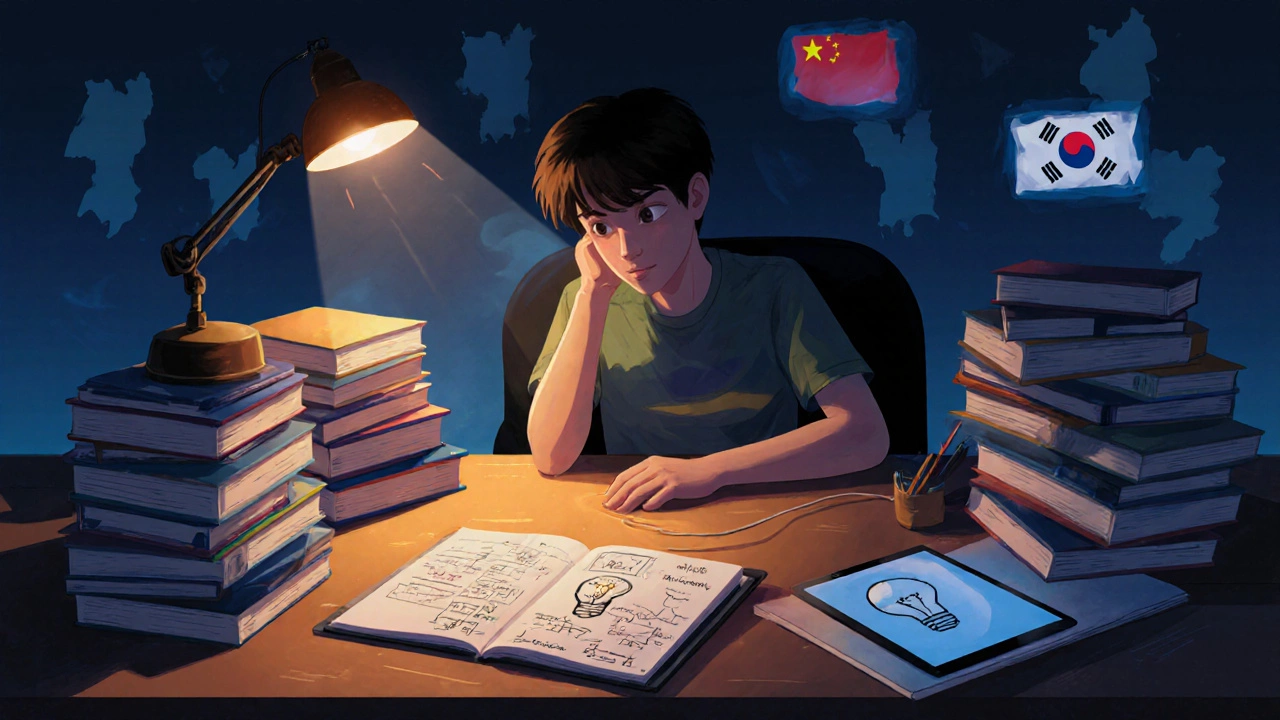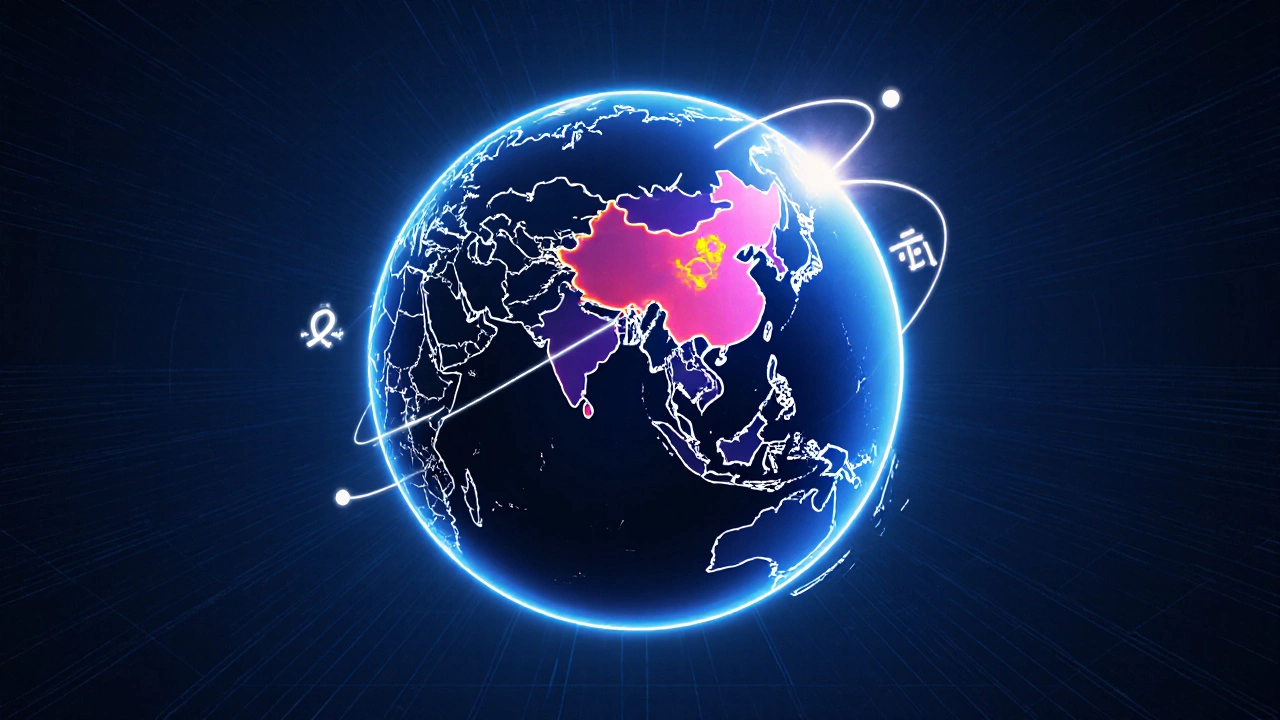Math Difficulty Comparison Tool
Compare Math Education Metrics Across Countries
Explore how countries stack up using real data from the International Mathematical Olympiad (IMO), TIMSS, and PISA assessments. Click any column header to sort by that metric.
| Country | IMO Avg Score (0-700) |
TIMSS Grade 8 (Average) |
PISA Math Score (Average) |
Curriculum Intensity (1-5) |
|---|---|---|---|---|
| Singapore | 678 | 629 | 569 | 5 |
| China (mainland) | 665 | 618 | 590 | 5 |
| South Korea | 658 | 613 | 554 | 4.5 |
| Japan | 642 | 607 | 529 | 4.5 |
| Russia | 635 | 600 | 511 | 4 |
| United States | 512 | 571 | 490 | 3 |
| United Kingdom | 525 | 585 | 504 | 3.5 |
Understanding the Metrics
- IMO: International Mathematical Olympiad - toughest proof-based competition for secondary students (0-700)
- TIMSS: Trends in International Mathematics and Science Study - curriculum-based knowledge at Grades 4 and 8
- PISA: Programme for International Student Assessment - measures 15-year-olds' ability to apply math in real-life contexts
- Curriculum Intensity: 1-5 scale measuring depth of proofs, speed expectations, and topic coverage
When you hear the question Which country has the hardest math, you’re really trying to pinpoint the nation whose math curriculum, teaching style, and competition performance push students to the edge of their abilities.
Key Takeaways
- International test scores (IMO, TIMSS, PISA) give a clear picture of math difficulty across countries.
- Singapore, China, and South Korea consistently rank at the top for both depth and speed.
- Curriculum intensity, teacher training, and cultural attitudes are the three pillars that make math harder.
- Students can prepare with targeted resources: past IMO problems, TIMSS practice sets, and high‑level textbooks.
- Misconceptions about "hardness" often ignore socioeconomic factors and test‑bias issues.
How Difficulty Is Measured
There are three main ways experts compare math difficulty worldwide:
- International Mathematical Olympiad (IMO) scores - the toughest proof‑based competition for secondary students.
- Trends in International Mathematics and Science Study (TIMSS) results - assess curriculum‑based knowledge at Grades 4 and 8.
- Programme for International Student Assessment (PISA) - measures 15‑year‑old’s ability to apply math in real‑life contexts.
Each test looks at slightly different skills. IMO focuses on abstract reasoning, TIMSS on classroom learning, and PISA on problem‑solving in everyday situations. By triangulating the three, we get a balanced view of which country truly challenges its students.

Top Performing Countries in International Competitions
The latest data (2023‑2024 cycle) highlights a clear leader‑board:
| Country | IMO Avg Score | TIMSS Grade8 Avg | PISA Math Score | Curriculum Intensity (1‑5) |
|---|---|---|---|---|
| Singapore | 678/700 | 629 | 569 | 5 |
| China (mainland) | 665/700 | 618 | 590 | 5 |
| SouthKorea | 658/700 | 613 | 554 | 4.5 |
| Japan | 642/700 | 607 | 529 | 4.5 |
| Russia | 635/700 | 600 | 511 | 4 |
| UnitedStates | 512/700 | 571 | 490 | 3 |
| UnitedKingdom | 525/700 | 585 | 504 | 3.5 |
Notice how Singapore tops every column. China’s PISA score is higher than Singapore’s, but its curriculum intensity is rated equally hard. The UnitedStates lags in IMO performance despite strong resources, indicating a gap between teaching methods and competition preparation.
What Makes a Country’s Math Hard
Three pillars explain why a nation’s math feels tougher than another’s:
- Curriculum Intensity - Number of topics, depth of proofs, and speed expectations.
- Teacher Expertise - Percentage of teachers with advanced degrees or specialized training.
- Cultural Attitude - Societal pressure to excel, parental involvement, and after‑school tutoring culture.
For example, Singapore’s Ministry of Education mandates a concept‑first, skills‑later approach, revisiting each theorem through multiple problem sets. This repetition builds fluency that feels intimidating to outsiders.
China’s system relies heavily on “Gaokao” preparation, where high‑stakes exams push schools to cram advanced topics early. The result is a steep learning curve that rewards speed and accuracy.
SouthKorea adds a layer of private tutoring (hagwon) that supplements school lessons with olympiad‐style problem solving, further raising the bar.
Tips for Students Facing Tough Math
If you’re gearing up for a competition or just want to survive a demanding curriculum, try these proven strategies:
- Start with past IMO problems. Solving real competition questions familiarizes you with the level of abstraction you’ll encounter.
- Use TIMSS sample tests to gauge foundational gaps. They cover the same topics taught in schools but at a higher difficulty.
- Build a “concept notebook.” Write down each theorem, a short proof, and two varied examples. This mirrors Singapore’s reinforcement technique.
- Join online forums (e.g., Art of Problem Solving) where students from hard‑math countries share solutions. Peer explanations often break down intimidating steps.
- Schedule short, daily practice sessions instead of marathon study blocks. Consistency beats cramming, especially for proof‑based subjects.
Remember, the goal isn’t to memorize every trick but to develop a flexible problem‑solving mindset.

Common Misconceptions About “Hardest Math”
Many people assume that a high test score automatically means the curriculum is harder. That’s not always true.
- Misconception 1: “Hard math = more homework.” Some countries assign fewer but more conceptually dense tasks.
- Misconception 2: “Only Asian countries are tough.” The UnitedKingdom’s A‑Level mathematics includes rigorous proof sections that rival any Asian system.
- Misconception 3: “If a country scores low, its math must be easy.” Low scores can reflect test‑bias, language barriers, or socioeconomic disparities rather than curriculum weakness.
Understanding the nuance helps you set realistic expectations and choose the right preparation path.
Resources for Deep‑Diving into World‑Class Math
Below is a quick cheat‑sheet of where to find quality material for each of the top countries:
- Singapore: Ministry of Education’s Primary Mathematics series (available as PDFs), Maths Challenge books used in local schools.
- China: “Zhongkao” past papers, Gaokao elite math textbooks.
- SouthKorea: Hagwon problem sets (often posted on Korean educational sites), KMO (Korea Mathematical Olympiad) archives.
- UnitedStates: AoPS “Intermediate Algebra” and “Number Theory” courses, USAMO past exams.
- UnitedKingdom: Cambridge International A‑Level past papers, Further Mathematics textbooks.
Combine any of these with the hardest math country insight from the table above, and you’ll have a roadmap that matches the world’s toughest standards.
Frequently Asked Questions
Which country consistently wins the International Mathematical Olympiad?
China has dominated the IMO medal table for the past decade, followed closely by the UnitedStates, Russia, and SouthKorea. Singapore, while smaller, often places in the top ten.
Does a high PISA math score mean a country’s curriculum is the hardest?
Not necessarily. PISA emphasizes real‑world problem solving, which can favor test‑taking skills over deep theoretical rigor. Countries like Singapore score high on both PISA and curriculum intensity, but others may excel in one and not the other.
How can a student from a less‑intensive math system catch up?
Start with international problem collections (IMO, USAMO), join online math communities, and practice daily with a concept notebook. Gradual exposure to higher‑level proofs bridges the gap.
Are there any free resources that mirror Singapore’s curriculum intensity?
Yes. The Singapore Ministry of Education releases sample worksheets online. Additionally, the Maths Challenge series offers free trial chapters that emulate classroom rigor.
What role does cultural pressure play in making math hard?
High expectations from families and society drive schools to adopt accelerated timetables, intensive homework, and competitive exams. This environment raises standards but can also increase stress, which is why balanced preparation is key.





